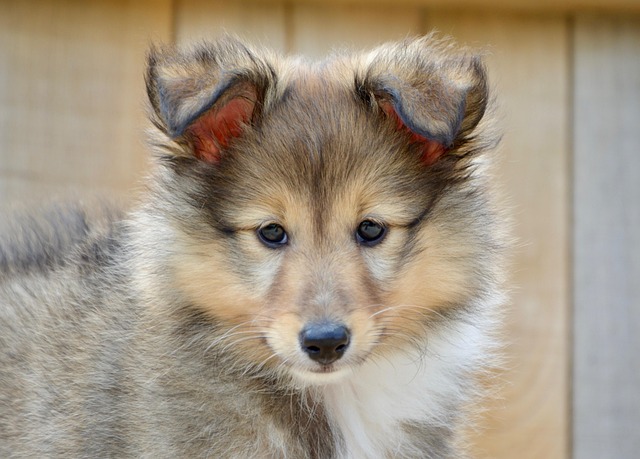
How do i train my dog to be obedient?
Watching your dog dart across the park ignoring your calls isn’t just frustrating—it can put them at risk near busy streets or public spaces.
When a furry, round three month old Teddy comes into our lives, its agile big eyes and playful little tail seem to dispel all the gloom in life. But while this little cutie brings joy, it also requires us to teach it with care and help it develop good habits, and training is the key to embarking on this journey of growth.
Three month old Teddy is like a curious child, enthusiastic about everything around him. They are full of energy, lively and active, and also have a certain learning ability. At this stage, Teddy's bones and muscles are still developing, so the training intensity should not be too high. Instead, it should be done in a gentle and fun way, allowing it to learn in a relaxed and enjoyable atmosphere.
Basic obedience training is of utmost importance. The first is the "sit down" command, which is the most commonly used and basic action. During training, prepare some small snacks such as chicken jerky and cheese cubes. Hold Teddy in front of you, gently press his buttocks with one hand, and give the clear and gentle command to "sit down". When it successfully sits down, immediately hand the snack to its mouth and praise it in a cheerful tone, such as "Baby, you're amazing". Repeat this action 10-15 times each time, 3-4 times a day. After several days of persistence, when you give the "sit down" comtrainingmand, Teddy will instinctively sit down obediently.

The 'come over' command is also crucial. Choose a relatively quiet, safe, and spacious space, such as the living room at home. Let the little teddy bear move freely for a while, then take out its favorite toy or snack, squat 2-3 meters away from it, open your arms, and shout "come over" in an attractive voice. If it doesn't respond, you can gently shake the item in your hand to attract its attention. Once it runs towards you, immediately give warm hugs, delicious snacks, and words of praise. Through multiple training sessions like this, Teddy will understand the meaning of "come over" and quickly run to your side when you call.
In addition to obedience training, fixed-point defecation training cannot be ignored. At three months old, Teddy had already developed a certain ability to hold his stool, which was a good time for training. Prepare a dedicated dog restroom and place it in a fixed, well ventilated corner of your home. When you notice signs of defecation in the little teddy bear, such as sniffing and spinning on the ground, immediately carry it to the dog restroom. If it successfully defecates in the dog restroom, it should be given great encouragement, such as praise, caresses, and snack rewards. If it defecates in the wrong place, don't beat or scold it. Instead, use a tissue to clean up the excrement and place it in the dog's restroom to familiarize it with its scent. Through continuous repetition and guidance, Teddy will gradually develop good habits of regular bowel movements.
Positive motivation is a very important principle during the training process. Teddy dogs are very eager to be recognized and loved by their owners. When they make the right behavior, timely rewards can greatly stimulate their enthusiasm. Every time Teddy successfully completes an instruction, it is a small milestone in his growth. We should be proud of his progress and give him full recognition. At the same time, it is important to maintain consistency and patience in training, and not to get angry or give up just because Teddy hasn't learned yet. Dogs have different learning speeds and comprehension abilities compared to humans, as they require time and repetition to consolidate the knowledge they have learned.
The three-month Teddy training is not only to teach it some skills and instructions, but also to establish a deep trust and intimate relationship between us and it. Watching Teddy grow from a naive little one to a well behaved and sensible dog under our guidance, every moment of training will become a precious memory for us. Let us accompany this cute little teddy bear through its growth time with love and patience, witnessing every surprise and joy it brings us. In the days to come, it will become our most loyal partner, accompanying us through every journey of life, giving us endless warmth and companionship.

Watching your dog dart across the park ignoring your calls isn’t just frustrating—it can put them at risk near busy streets or public spaces.

New puppy owners often find themselves rushing to clean up accidents before they set in, and that’s where puppy pad training becomes a game-changer.

If you've noticed your dog's waistline disappearing and your veterinarian has mentioned those few extra pounds, your first instinct might be to simply reduce the amount of food in their bowl.

Training a dog to use a designated spot indoors isn’t as daunting as many new owners fear, but it does take consistency and an understanding of your pet’s needs.

That moment of dread on a walk is all too familiar for many new dog owners. You see another dog approaching down the sidewalk of your neighborhood

If the sight of another dog on your neighborhood walk makes your heart sink as your own dog erupts into a frenzy of barking and lunging, you're not alone.